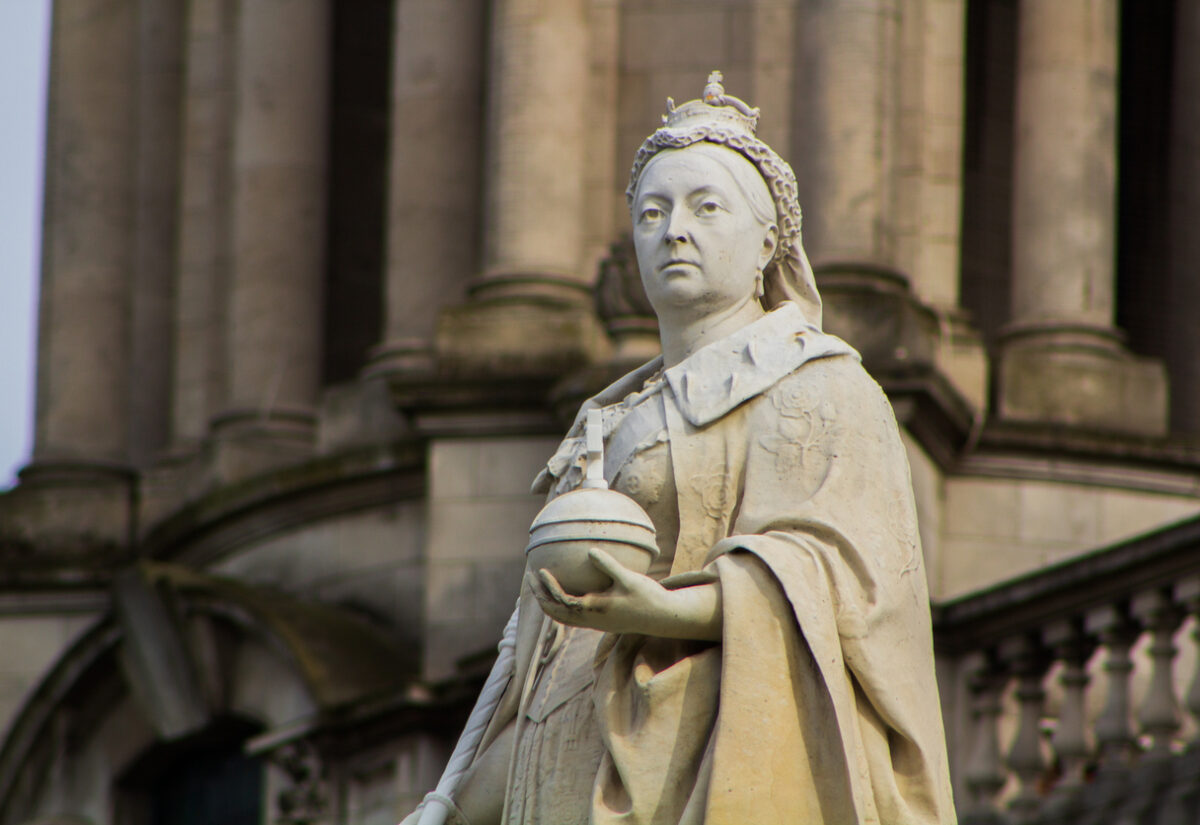 Getty Images/iStockphoto
Getty Images/iStockphotoThroughout Britain’s long and often turbulent royal history, the monarchy has not been short of scandal. While some have become widely known, others have been quietly forgotten, covered up, or deliberately minimised. Here are ten shocking royal scandals that history has tried its best to brush under the carpet – some dating back centuries.
Queen Isabella and the murder of Edward II
Queen Isabella, wife of Edward II, played a central role in one of the most infamous power struggles of medieval England. Edward II’s reign was marked by political instability, largely due to his reliance on favourites like Piers Gaveston and the Despensers, which alienated the nobility. Isabella, after being sidelined and publicly humiliated, formed an alliance with Roger Mortimer, and the two eventually led an invasion that forced Edward to abdicate in favour of their son.
Edward II was imprisoned at Berkeley Castle and died under mysterious circumstances in 1327. Chroniclers at the time suggested he may have been murdered on Isabella and Mortimer’s orders—one gruesome rumour claimed he was killed with a red-hot poker. While the exact cause of death remains unproven, Isabella’s role in deposing and possibly assassinating her husband is one of the most brutal power moves in royal history.
The Princes in the Tower
In 1483, the two young sons of Edward IV—Edward V and his brother Richard—were taken to the Tower of London by their uncle, Richard, Duke of Gloucester. Shortly after, Richard seized the throne as Richard III. The boys disappeared and were never seen again.
For centuries, many have believed Richard III had them murdered to solidify his hold on power. While no conclusive evidence exists, the discovery of two small skeletons in the Tower in 1674 added to the mystery. The remains were buried in Westminster Abbey, but the debate continues—was it Richard, or someone else? Either way, the scandal has become a defining mystery of the late Plantagenet period.
Henry VIII’s execution of Anne Boleyn
Henry VIII’s break from the Catholic Church to marry Anne Boleyn was scandalous enough, but what followed shocked even his own court. Just three years after their marriage, Anne was arrested and accused of adultery, incest, and treason. Most historians agree these charges were fabricated, likely to allow Henry to rid himself of Anne and marry Jane Seymour.
Anne was executed in 1536 after a swift and dubious trial. The spectacle of a king executing his queen—especially one he had upended the entire religious structure of England to marry—was almost without precedent. Her death revealed the ruthless lengths to which Henry would go to secure his legacy and male heir.
James VI and I’s relationships with male courtiers
While often downplayed or ignored in official histories, King James VI of Scotland and I of England was widely believed to have had romantic relationships with several male favourites. Chief among them was George Villiers, Duke of Buckingham, whom James showered with titles, wealth, and influence.
Letters between the two contain passionate language, and foreign diplomats openly referred to Buckingham as the king’s lover. Although same-sex relationships were criminalised at the time, James’s position protected him from legal consequences. Still, the rumours of his preferences and the political corruption associated with Buckingham dogged James’s reign and were cautiously edited out of many traditional histories.
The marriage of George IV and Caroline of Brunswick
George IV’s marriage to Caroline of Brunswick was a disaster from the outset. The two despised each other almost immediately, and George was already secretly (and illegally) married to Maria Fitzherbert. George attempted to divorce Caroline publicly, accusing her of multiple affairs—an unprecedented move that sparked outrage.
Caroline returned to England in 1820 to claim her role as queen consort but was barred from George’s coronation. Her supporters rioted in the streets, and her death just weeks later added to the drama. Victorian historians often sanitised this tale, but it was, in essence, a public royal brawl that humiliated the crown.
Queen Victoria’s relationship with John Brown
After Prince Albert’s death, Queen Victoria withdrew from public life and grew unusually close to her Scottish servant, John Brown. Their relationship sparked court gossip, with some suggesting a secret marriage. Victoria’s children and ministers were uneasy with Brown’s influence, and nicknames like “Mrs Brown” followed the queen.
While there’s no conclusive proof of a romantic or marital relationship, the intimacy between Victoria and Brown was undeniable. After Brown’s death, Victoria mourned him deeply and ensured his memory was preserved. Her relationship with Brown was quietly minimised in official accounts and later films, yet it remains one of the more enduring royal whispers.
Edward VII’s sex scandals
Before becoming king, Edward VII (known as Bertie) earned a reputation as a serial womaniser. He was involved in multiple scandals, including being named in a divorce case and regularly visiting brothels. His affair with actress Lillie Langtry was widely publicised, and he reportedly had dozens of mistresses.
Despite—or perhaps because of—his indulgent lifestyle, Edward VII remained popular. Yet the royal household worked hard to control his image, fearing his private escapades would damage the monarchy. Historians now acknowledge that Edward’s scandalous private life was an open secret, but it was carefully airbrushed in official narratives.
Edward VIII and Wallis Simpson
Edward VIII’s relationship with American divorcée Wallis Simpson led to the most seismic royal crisis of the 20th century. In 1936, Edward abdicated the throne to marry Wallis, a twice-divorced woman—something the Church of England (of which he was head) would not accept.
What is less widely discussed is Edward’s Nazi sympathies. Documents released decades later revealed that Edward and Wallis visited Hitler in 1937 and that the Nazis considered using Edward as a puppet monarch. While the love story is often romanticised, the political danger Edward posed was quietly buried in post-war historical retellings.
Princess Margaret’s affair with Peter Townsend
In the 1950s, Princess Margaret’s love for Group Captain Peter Townsend—a divorced man—captivated the nation. But under royal protocol and the pressure of the Church, she was ultimately forced to end the relationship. The scandal raised questions about personal freedom versus duty and the monarchy’s outdated expectations.
At the time, the palace presented Margaret’s decision as a noble sacrifice, but private letters later revealed her deep heartbreak. The affair highlighted the double standards faced by royal women and sparked public sympathy, though the full emotional toll was downplayed for decades.
Prince Andrew’s Epstein connection
In recent years, the scandal surrounding Prince Andrew’s association with convicted sex offender Jeffrey Epstein has rocked the modern monarchy. Allegations of sexual misconduct and damning interviews—particularly his 2019 BBC Newsnight appearance—resulted in public outrage and his withdrawal from royal duties.
Though Buckingham Palace has tried to manage the fallout, the story remains one of the most damaging to the royal family’s reputation in recent memory. Legal proceedings and settlements have continued to cast a shadow over Andrew’s role, with the palace maintaining a tightly controlled silence about the full extent of his involvement.
These scandals, whether rooted in political power plays, illicit relationships, or outright criminal associations, show that the British monarchy—despite its pomp and ceremony—has always had its share of controversy. And while some of these stories have been sanitised or obscured, history continues to remember what official accounts hoped would be forgotten.



